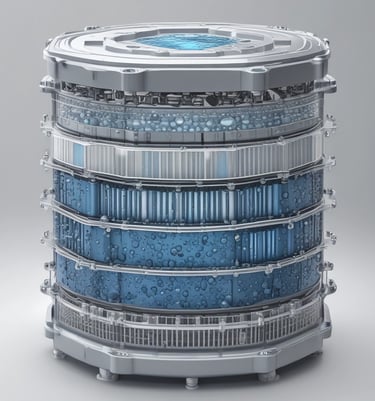Fuel Cells: The Future of Clean Energy and How Simulations Drive Innovation
3/12/20252 min read


As the world transitions to cleaner energy solutions, fuel cells are emerging as a promising technology for sustainable power generation. With applications in transportation, industrial power, and backup energy systems, the fuel cell market is projected to grow significantly in the coming years. Companies and governments are heavily investing in hydrogen fuel cells to reduce carbon emissions and develop a robust hydrogen economy.
The Growing Fuel Cell Market
Fuel cells, particularly proton exchange membrane (PEM) and solid oxide fuel cells (SOFC), are gaining traction due to their high efficiency, scalability, and low emissions. The global fuel cell market is expected to reach $40 billion by 2030, driven by:
Government incentives & policies (EU Green Deal, US Inflation Reduction Act, Japan’s Hydrogen Roadmap)
Advancements in hydrogen production & storage
Increased demand for clean mobility solutions (hydrogen-powered vehicles, ships, and aircraft)
However, the commercialization of fuel cells faces key challenges such as cost reduction, durability, and efficiency improvements. This is where computational tools play a crucial role.
The Role of Simulations in Fuel Cell Development
To optimize fuel cell performance and accelerate innovation, engineers leverage computational fluid dynamics (CFD) simulations and multi-physics modeling. These tools allow researchers to:
✅ Enhance Fuel Cell Efficiency – Simulations help analyze electrochemical reactions, thermal management, and gas diffusion to maximize energy output.
✅ Improve Material Durability – Predicting degradation mechanisms through modeling extends the lifespan of fuel cells.
✅ Optimize Hydrogen Flow Distribution – CFD simulations enable the design of flow channels and catalyst layers for uniform gas distribution, reducing energy losses.
✅ Reduce Prototyping Costs – Virtual testing of fuel cell components minimizes the need for expensive physical prototypes, speeding up R&D.
The Future of Fuel Cells & Simulation Technologies
As the industry moves toward mass adoption, advanced AI-driven simulations and digital twins will further enhance fuel cell design and integration. Companies investing in simulation-driven R&D will have a competitive edge in bringing efficient, cost-effective, and scalable fuel cell solutions to market.
Fuel cells represent a key pillar of the global clean energy transition, and with the power of computational simulations, engineers can unlock their full potential. The road ahead is challenging, but the fusion of hydrogen technology and cutting-edge simulation tools is paving the way for a cleaner, more sustainable future.
Interested in how simulations can improve your fuel cell designs? Contact us to explore advanced CFD solutions tailored for fuel cell innovation!


